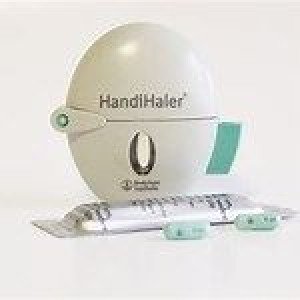 Welcome
Welcome
“May all be happy, may all be healed, may all be at peace and may no one ever suffer."
Incepta Pharmaceuticals Ltd.
Catium 27.5mcg + 15.6mcg

Generic for Diseases
- COPD
- Chronic obstructive pulmonary disease (COPD)
Indacaterol Maleate is a selective β2-adrenergic agonist. Its chemical name is (R)-5-[2-(5,6-Diethylindan-2-ylamino)-1-hydroxyethyl]-8 hydroxy-1H-quinolin-2-one maleate. Indacaterol Maleate has a molecular weight of 508.56 and its empirical formula is C24H28N2O3.C4H4O4. Indacaterol Maleate is a white to very slightly grayish or very slightly yellowish powder. Indacaterol Maleate is freely soluble in N methylpyrrolidone and dimethylformamide, slightly soluble in methanol, ethanol, propylene glycol and polyethylene glycol 400, very slightly soluble in water, isopropyl alcohol and practically insoluble in 0.9% sodium chloride in water, ethyl acetate and n-octanol. Glycopyrronium is a long-acting, specific antimuscarinic agent, in clinical medicine often called an anticholinergic. It has a similar affinity to the subtypes of muscarinic receptors M1 to M5. In the airways, inhibition of M3-receptors at the smooth muscle results in relaxation. The high potency and slow receptor dissociation found its clinical correlate in significant and long-acting bronchodilation in patients with COPD.
Indacaterol & Glycopyrronium combination is indicated for the long-term, maintenance treatment of airflow obstruction in patients with chronic obstructive pulmonary disease (COPD).
Indacaterol 110 µg and Glycopyrronium 50 µg: The recommended dosage of Indacaterol & Glycopyrronium combination DPI is inhalation of the contents of one capsule once daily with the ConviHaler device.
Indacaterol 27.5 µg & Glycopyrronium 15.6 µg: The recommended dosage of Indacaterol & Glycopyrronium combination DPI is inhalation of the contents of one capsule twice daily with the ConviHaler device.
Inhaled medicines may cause inhalation-induced bronchospasm, dehydration, dry mouth, constipation dizziness, insomnia, skin and subcutaneous tissue disorders & immune system disorders.
Overdose Effects
An overdose of indacaterol is likely to lead to exaggerated effects typical of beta2-adrenergic stimulants, i.e. tachycardia, tremor, palpitations, headache, nausea, vomiting, drowsiness, ventricular arrhythmias, metabolic acidosis, hypokalaemia and hyperglycaemia. High doses of Glycopyrronium may lead to anticholinergic signs and symptoms.
Indacaterol and Glycopyrronium combination is as a twice daily maintenance bronchodilator should not be used for the initial treatment of acute episodes of bronchospasm, i.e. rescue therapy. Immediate hypersensitivity reactions may occur after administration of Indacaterol and Glycopyrronium combination inhalation powder. As with other anticholinergic drugs, Glycopyrronium should be used with caution in patients with narrow-angle glaucoma, prostatic hyperplasia or bladder-neck obstruction.
Pregnancy & Lactation
There is a limited amount of data from the use of Indacaterol and Glycopyrronium combination in pregnant women. Animal studies do not indicate direct or indirect harmful effects with respect to reproductive toxicity at clinically relevant doses. Indacaterol and Glycopyrronium combination should not be used in pregnant or nursing women unless the expected benefit outweighs any possible risk to the unborn child or the infant.
Catium 27.5mcg + 15.6mcg and more Available Brands
Luradox 20mg
Bisopro Plus 5mg + 6.25...
Nobesit XR 1000mg
Flutisal 50mcg + 25...
Linatab M 2.5mg + 50...
Expansol 6% + 0.9%
Purifen 400mg
Spotclen 4%
...
To be happy, beautiful, healthy, wealthy, hale and long-lived stay with DM3S.